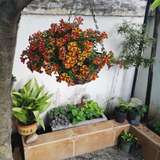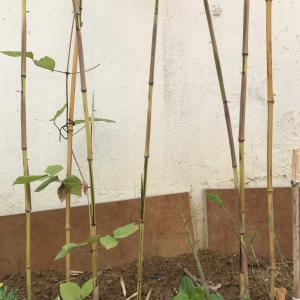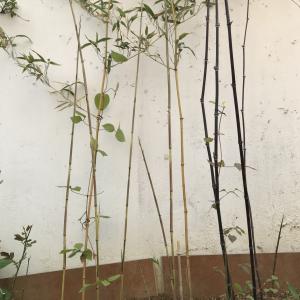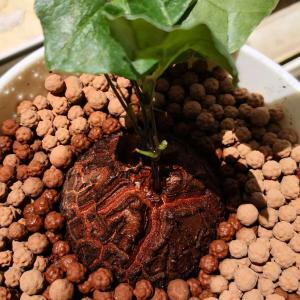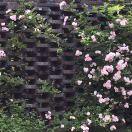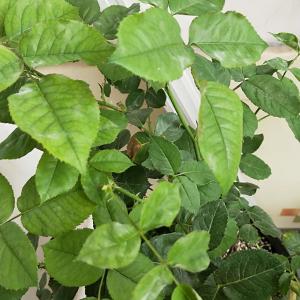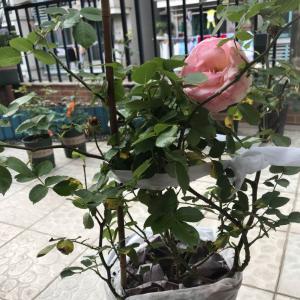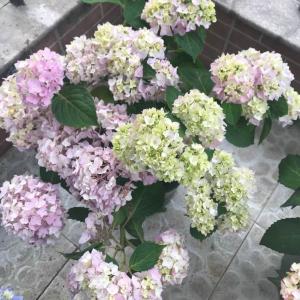文章
Miss Chen
2018年05月13日

Description: This biennial plant forms a rosette of leaves during the first year. During the second year, it becomes a rather lanky plant about 2-4' tall that branches occasionally. The stems have abundant white hairs; the lower central stem is often ribbed. The basal and lower leaves are up to 6" long and 3½" across; they are cordate-ovate or ovate with petioles up to 2" long. The upper leaves are lanceolate to elliptic and sessile, otherwise they are similar to the lower leaves. All leaves have smooth (entire) and slightly ciliate margins. The upper leaf surface is dark green and sparsely covered with short stiff hairs, while the lower leaf surface is medium green and more hairy, especially along the major veins. Both the lower and upper leaves alternate along the stems. The upper stems terminate in flowering racemes about 4-12" long; sometimes shorter racemes or individual flowers develop from the axils of the upper leaves. The stalks (peduncles) of these racemes are pubescent or hairy, and small leafy bracts may develop underneath some of the flowers. The pedicels of the flowers are pubescent or hairy and up to ¼" (6 mm.) in length.
Each flower is about 1/8" (3 mm.) across, consisting of 5 petals and a pubescent green calyx with 5 slender teeth. The petals are white and well-rounded; less often, they are light blue. The blooming period occurs during the summer, lasting about 2-3 months. Only a few flowers are in bloom at the same time and they are fairly inconspicuous. The flowers are replaced by prickly subgloboid fruits (about 4-6 mm. across) that hang downward from short slender pedicels (one fruit per flower). Hooked prickles densely cover the surfaces of these fruits. The fruits are initially whitish green, but later they later become brown. Each fruit contains 4 nutlets. The root system consists of a taproot. This plant spreads by reseeding itself; it occasionally forms colonies.

Cultivation: The preference is partial sun to medium shade, mesic conditions, and a fertile loamy soil. However, this plant tolerates different kinds of soil and moisture conditions and it is quite adaptable.
Range & Habitat: The native Stickseed is common in central and northern Illinois, and locally common to absent in the southern section of the state (see Distribution Map). Habitats include moist to slightly dry deciduous woodlands, woodland borders, powerline clearances in wooded areas, thickets, and shady fence rows. Stickseed prefers disturbed wooded areas and it is rather weedy. This plant sometimes occurs in wooded areas where there has been a recent fire, as well as degraded wooded areas that are subjected to occasional grazing by cattle.

Faunal Associations: The nectar of the flowers attracts Halictid bees (Halictus spp., Lasioglossum spp.) and Syrphid flies, particularly Syritta pipiens. A flea beetle, Longitarsus melanurus, feeds on the leaves of Stickseed and other members of the Borage family. The bitter foliage is avoided by deer and other mammalian herbivores. When there is an overpopulation of deer in wooded areas, Stickseed often becomes more common. The bur-covered fruits can cling to the fur of mammals and clothing of humans; by this means, they are introduced into new areas.
Photographic Location: Edge of a wooded area at Busey Woods in Urbana, Illinois.

Comments: This is another woodland wildflower with small white flowers that blooms during the summer in shaded areas. The most distinctive characteristic of Stickseed (Hackelia virginiana) are the prickly fruits that hang downward from its slender racemes. Another species in the Borage family, European Stickseed (Lappula squarrosa), has similar racemes of prickly fruits. However, the prickles of its fruits are arranged in columns with spaces in-between. In contrast, the fruits of Stickseed are densely covered with prickles throughout. European Stickseed is shorter than Stickseed and its leaves are more slender. This introduced species prefers sunny areas, while the native Stickseed prefers wooded areas with some shade. An older scientific name for Stickseed is Lappula virginiana.
Each flower is about 1/8" (3 mm.) across, consisting of 5 petals and a pubescent green calyx with 5 slender teeth. The petals are white and well-rounded; less often, they are light blue. The blooming period occurs during the summer, lasting about 2-3 months. Only a few flowers are in bloom at the same time and they are fairly inconspicuous. The flowers are replaced by prickly subgloboid fruits (about 4-6 mm. across) that hang downward from short slender pedicels (one fruit per flower). Hooked prickles densely cover the surfaces of these fruits. The fruits are initially whitish green, but later they later become brown. Each fruit contains 4 nutlets. The root system consists of a taproot. This plant spreads by reseeding itself; it occasionally forms colonies.

Cultivation: The preference is partial sun to medium shade, mesic conditions, and a fertile loamy soil. However, this plant tolerates different kinds of soil and moisture conditions and it is quite adaptable.
Range & Habitat: The native Stickseed is common in central and northern Illinois, and locally common to absent in the southern section of the state (see Distribution Map). Habitats include moist to slightly dry deciduous woodlands, woodland borders, powerline clearances in wooded areas, thickets, and shady fence rows. Stickseed prefers disturbed wooded areas and it is rather weedy. This plant sometimes occurs in wooded areas where there has been a recent fire, as well as degraded wooded areas that are subjected to occasional grazing by cattle.

Faunal Associations: The nectar of the flowers attracts Halictid bees (Halictus spp., Lasioglossum spp.) and Syrphid flies, particularly Syritta pipiens. A flea beetle, Longitarsus melanurus, feeds on the leaves of Stickseed and other members of the Borage family. The bitter foliage is avoided by deer and other mammalian herbivores. When there is an overpopulation of deer in wooded areas, Stickseed often becomes more common. The bur-covered fruits can cling to the fur of mammals and clothing of humans; by this means, they are introduced into new areas.
Photographic Location: Edge of a wooded area at Busey Woods in Urbana, Illinois.

Comments: This is another woodland wildflower with small white flowers that blooms during the summer in shaded areas. The most distinctive characteristic of Stickseed (Hackelia virginiana) are the prickly fruits that hang downward from its slender racemes. Another species in the Borage family, European Stickseed (Lappula squarrosa), has similar racemes of prickly fruits. However, the prickles of its fruits are arranged in columns with spaces in-between. In contrast, the fruits of Stickseed are densely covered with prickles throughout. European Stickseed is shorter than Stickseed and its leaves are more slender. This introduced species prefers sunny areas, while the native Stickseed prefers wooded areas with some shade. An older scientific name for Stickseed is Lappula virginiana.
0
0
文章
Miss Chen
2018年05月13日

Description: This small perennial orchid produces a low rosette of evergreen basal leaves. Individual leaves are 1½-2½" long and ¾-1½" across; they are ovate or broadly elliptic and smooth along their margins. There are 5-7 primary veins per leaf; they are parallel. These veins are interconnected through a network of secondary veins. Both the primary and secondary veins are accented in white, while the remaining leaf surface is dark green. The basal leaves taper abruptly to petiole-like bases that are short and winged, where they are also accented in white along their central veins. After several years, a spike-like raceme of flowers develops from the basal rosette that is 4-14" tall and more or less erect. The central stalk of this inflorescence is light green, glandular-pubescent, and terete. Along the lower two-thirds of its length, there are widely separated leafy bracts. These bracts are small in size (about ½" in length), linear-lanceolate in shape, and ascending to erect. Along the upper one-third of the central stalk, the small flowers are densely distributed, facing in all directions.
The sepals and petals of these flowers (3 of each per flower) are white or greenish white, while their inferior ovaries are green and glandular-pubescent. The upper sepal and 2 lateral petals of each flower are merged together to form a hood with a slightly upturned outer rim, while the 2 lateral sepals are free and the lower petal forms an open pouch with a minute down-turned beak. These petals and sepals are 3.5-5.5 mm. long; the outer surfaces of the hood and lateral sepals are minutely pubescent. The ovaries are 6-8 mm. long, ellipsoid in shape, and ascending. At the bases of the ovaries, there are ascending floral bracts. These bracts are green, glandular-pubescent, linear-lanceolate in shape, and ascending; they are about the same length as the ovaries. The blooming period occurs during mid- to late summer, lasting about 3-4 weeks. There is no noticeable floral fragrance. Afterwards, the flowers are replaced by seed capsules that become ovoid in shape and brown at maturity. At this time, these capsules split open into several sections to release their minute seeds to the wind. The root system consists of a shallow creeping rhizome with coarse fibrous roots. After flowering, this rhizome forms 1-3 clonal offsets. The clonal offsets become independent on their rhizomes, while the original rhizome dies. The evergreen basal leaves persist for at least 1½ years (at least 2 summers and 1 winter).

Cultivation: The preference is medium shade to dappled sunlight, mesic to dry-mesic conditions, and an acidic loose soil that contains loam, loess (wind-blown silt from a prior ice age), or glacial till with decaying organic matter. The site should be protected from drying winds and it should be relatively humid. The root system of this orchid benefits from an endomycorrhizal association with certain kinds of fungi. This orchid has been successfully cultivated indoors in terrariums (Ugiansky, 2010). It should not be collected from the wild, which can easily destroy local populations.
Range & Habitat: The native Downy Rattlesnake-Plantain is uncommon in Illinois, occurring mostly in northern and southern Illinois (see Distribution Map). Habitats include upland woodlands, north-facing wooded slopes, bluffs, large wooded ravines or sandstone canyons, sandstone glades, and woodlands damaged by logging. On rare occasions, this orchid has also been found in forested bogs. It is often associated with such canopy trees as oaks, pines, Eastern Hemlock (Tsuga canadensis), or sugar maple (Acer saccharum). This orchid usually occurs in high Faunal Associations: The small flowers are cross-pollinated by bees, including bumblebees (Bombus spp.) and green metallic bees (e.g., Augochlora spp., Augochlorella spp.); see ILPIN and Homoya (1993) for more information. Aside from this, little is known about floral-faunal relationships for this orchid. The evergreen leaves may be browsed by deer and the rhizomes may be eaten by chipmunks or mice, but additional study of such potential threats is required.
Photographic Location: A rocky bluff dominated by Eastern Hemlock (Tsuga canadensis) at a nature preserve in east-central Indiana.
Comments: While the flowers of Downy Rattlesnake-Plantain are rather small, the reticulated patterns of its basal leaves are very ornate and unique, making this orchid easy to identity. In spite of its common name, this orchid is not closely-related to plantains (Plantago spp.); its leaves have a shape that is similar to some of the common broad-leaved plantains. The common name is also inspired by the superficial resemblance of the leaves' reticulated patterns to the skin of a rattlesnake. The inflorescence of Downy Rattlesnake-Plantain resembles those of the Lady Tresses' Orchids (Spiranthes spp.), although they have dissimilar leaves. The flowers of the former orchid differ from those of the latter by the pouch-like structure of their lower lips, which is lacking in the flowers of Lady Tresses' Orchids. There are other orchid species in the Goodyera genus, but their ranges are located outside of Illinois, mostly to the north or northeast.
The sepals and petals of these flowers (3 of each per flower) are white or greenish white, while their inferior ovaries are green and glandular-pubescent. The upper sepal and 2 lateral petals of each flower are merged together to form a hood with a slightly upturned outer rim, while the 2 lateral sepals are free and the lower petal forms an open pouch with a minute down-turned beak. These petals and sepals are 3.5-5.5 mm. long; the outer surfaces of the hood and lateral sepals are minutely pubescent. The ovaries are 6-8 mm. long, ellipsoid in shape, and ascending. At the bases of the ovaries, there are ascending floral bracts. These bracts are green, glandular-pubescent, linear-lanceolate in shape, and ascending; they are about the same length as the ovaries. The blooming period occurs during mid- to late summer, lasting about 3-4 weeks. There is no noticeable floral fragrance. Afterwards, the flowers are replaced by seed capsules that become ovoid in shape and brown at maturity. At this time, these capsules split open into several sections to release their minute seeds to the wind. The root system consists of a shallow creeping rhizome with coarse fibrous roots. After flowering, this rhizome forms 1-3 clonal offsets. The clonal offsets become independent on their rhizomes, while the original rhizome dies. The evergreen basal leaves persist for at least 1½ years (at least 2 summers and 1 winter).

Cultivation: The preference is medium shade to dappled sunlight, mesic to dry-mesic conditions, and an acidic loose soil that contains loam, loess (wind-blown silt from a prior ice age), or glacial till with decaying organic matter. The site should be protected from drying winds and it should be relatively humid. The root system of this orchid benefits from an endomycorrhizal association with certain kinds of fungi. This orchid has been successfully cultivated indoors in terrariums (Ugiansky, 2010). It should not be collected from the wild, which can easily destroy local populations.
Range & Habitat: The native Downy Rattlesnake-Plantain is uncommon in Illinois, occurring mostly in northern and southern Illinois (see Distribution Map). Habitats include upland woodlands, north-facing wooded slopes, bluffs, large wooded ravines or sandstone canyons, sandstone glades, and woodlands damaged by logging. On rare occasions, this orchid has also been found in forested bogs. It is often associated with such canopy trees as oaks, pines, Eastern Hemlock (Tsuga canadensis), or sugar maple (Acer saccharum). This orchid usually occurs in high Faunal Associations: The small flowers are cross-pollinated by bees, including bumblebees (Bombus spp.) and green metallic bees (e.g., Augochlora spp., Augochlorella spp.); see ILPIN and Homoya (1993) for more information. Aside from this, little is known about floral-faunal relationships for this orchid. The evergreen leaves may be browsed by deer and the rhizomes may be eaten by chipmunks or mice, but additional study of such potential threats is required.
Photographic Location: A rocky bluff dominated by Eastern Hemlock (Tsuga canadensis) at a nature preserve in east-central Indiana.
Comments: While the flowers of Downy Rattlesnake-Plantain are rather small, the reticulated patterns of its basal leaves are very ornate and unique, making this orchid easy to identity. In spite of its common name, this orchid is not closely-related to plantains (Plantago spp.); its leaves have a shape that is similar to some of the common broad-leaved plantains. The common name is also inspired by the superficial resemblance of the leaves' reticulated patterns to the skin of a rattlesnake. The inflorescence of Downy Rattlesnake-Plantain resembles those of the Lady Tresses' Orchids (Spiranthes spp.), although they have dissimilar leaves. The flowers of the former orchid differ from those of the latter by the pouch-like structure of their lower lips, which is lacking in the flowers of Lady Tresses' Orchids. There are other orchid species in the Goodyera genus, but their ranges are located outside of Illinois, mostly to the north or northeast.
0
0
文章
权问薇
2018年05月13日


一.种植方法:
1这种植物通常是采用种子繁殖的,而且无论是撒播还是穴播还是条播都可以,大概每亩的种子用量大概是0.5-1千克,无论是春夏秋都可以播种。
2这种植物由于种子比较细小,所以播种之前应该先把苗床整理一遍,由于它对于泥土的要求不太严格,在PH5.0到8.2的泥土上面都可以健康地成长,但是由于这种植物比较害怕积水,所以种植的泥土虽然对于酸碱没有要求,但是一定要有疏通性,而且排水性也要好,这样才能够便于雨水的排放,不至于植株的根部腐坏导致整株都会死亡。

3这种植物的种子缺损率能够高达百分之七十到百分之八十,所以播种之前必须要先对种子进行催生芽苗的处理,如果种植的种子量比较少的话,可以用含百分之十五的硫酸液浸泡种子20到30分钟之后再播种,或者也可以用70℃到80℃的水浸泡,大概浸12到15个小时之后就可以播种了。如果种植的种子数量比较多的话,最好还是准备一台碾米机器剥掉种子外皮。
4这种植物的种子出芽率一般在百分之四十到百分之九十,有一些比较硬实的要等到第二年才会出芽。
二:注意事项:
1这种植物由于在芽苗时期成长速度非常地慢,如果不经常管理的话,周边会长出许多杂草汲取植株需要的营养,植株的幼苗就不能健康地成长了。所以在它的幼苗期,我们要经常给它除草。
2这种植物能够抵御一定程度内的寒冷,所以即使是到了冬季也不需要对它进行保温处理,而且耐旱性也比较高,所以不用担心水量的问题。
3一旦这种植物度过了幼苗期,那么它就能够成功地抑制杂草的生长。

0
3
文章
Miss Chen
2018年05月12日

Description: This is a herbaceous perennial plant about ½–2' tall that branches occasionally. The stems are light green to pale red, terete, slightly hairy, and shiny. Both basal and alternate leaves are produced. Basal leaves are compound or simple with long petioles; compound leaves are odd-pinnate with 3-7 leaflets. Simple leaves are orbicular, shallowly cleft, and dentate; the leaflets of compound leaves are ovate, shallowly or deeply cleft, and dentate. Alternate leaves are usually trifoliate with short petioles; their leaflets are narrowly ovate, cleft, and dentate. The upper surfaces of these leaves are medium to dark green and hairless to hairy. At the base of each leaf, there is a pair of large leafy stipules; these stipules are deeply cleft and dentate along their margins.
Flowers develop from the upper stems on long branching stalks; each stalk terminates in an individual flower about ¼" across. Individual flowers also develop from the axils of the upper leaves on long unbranched stalks. These flowering stalks are slightly hairy, shiny, and terete like the stems. Each flower has 5 yellow petals, 5 light green sepals, and a dense cluster of pistils and stamens in the middle. The petals are about the same length as the sepals (less than 1/8" or 3 mm.); the sepals are ovate and hang downward from the rest of the flower. The blooming period occurs from mid- to late spring and lasts about 3 weeks; only a few flowers are in bloom at the same time. Each flower is replaced by dense cluster of bristly achenes; the receptacle of this clustered fruit is exerted from the calyx on a short stout stalk. The individual achenes are ellipsoid in shape and hairless to pubescent; the hooked bristles at their tips are persistent styles. The root system is fibrous and rhizomatous.
Cultivation: The preference is dappled sunlight to light shade, moist to mesic conditions, and a rich loamy soil. Most growth and development occurs during the spring.
Range & Habitat: The native Spring Avens is common in the southern half of Illinois, while in the northern half of the state it is occasional, uncommon, or absent (see Distribution Map). Habitats include rich deciduous woodlands, open woodlands, areas along woodland paths, shaped seeps, woodland borders, and fence rows with woody vegetation. Spring Avens can be found in both disturbed and undisturbed areas that receive some shade.

Faunal Associations: The flowers attract small bees primarily, including little carpenter bees, Halictid bees, cuckoo bees (Nomada spp.), and masked bees (Hylaeus spp.); these small bees suck mostly nectar, although some of the Halictid bees collect pollen for their larvae. Occasionally, Syrphid flies, Tachinid flies, and other flies also visit the flowers. The leaves of Spring Avens and other woodland Geum spp. (Avens) are grazed sparingly by White-tailed Deer. The bristly achenes can cling to the fur of mammals, feathers of birds, and clothing of humans. By this means, they are distributed into new areas.
Photographic Location: A floodplain woodland in Vermilion County, Illinois.
Comments: This is the first woodland Geum sp. (Avens) to bloom in Illinois. Because the yellow petals of its flowers are quite small and short-lived, Spring Avens is not very showy. In contrast, its leaves are moderately attractive and variable in shape. Other woodland species in this genus include Geum canadensis (White Avens) and Geum laciniatum (Rough Avens). These species have flowers with white or cream petals and they bloom a little latter in the year (late spring to early summer). Unlike other species in the genus, the bristly fruits of Spring Avens are exserted from their calyces on short stout stalks. The fruits of other Avens lack these stalks. Thus, Spring Avens is easily identified by this peculiar characteristic.
Flowers develop from the upper stems on long branching stalks; each stalk terminates in an individual flower about ¼" across. Individual flowers also develop from the axils of the upper leaves on long unbranched stalks. These flowering stalks are slightly hairy, shiny, and terete like the stems. Each flower has 5 yellow petals, 5 light green sepals, and a dense cluster of pistils and stamens in the middle. The petals are about the same length as the sepals (less than 1/8" or 3 mm.); the sepals are ovate and hang downward from the rest of the flower. The blooming period occurs from mid- to late spring and lasts about 3 weeks; only a few flowers are in bloom at the same time. Each flower is replaced by dense cluster of bristly achenes; the receptacle of this clustered fruit is exerted from the calyx on a short stout stalk. The individual achenes are ellipsoid in shape and hairless to pubescent; the hooked bristles at their tips are persistent styles. The root system is fibrous and rhizomatous.
Cultivation: The preference is dappled sunlight to light shade, moist to mesic conditions, and a rich loamy soil. Most growth and development occurs during the spring.
Range & Habitat: The native Spring Avens is common in the southern half of Illinois, while in the northern half of the state it is occasional, uncommon, or absent (see Distribution Map). Habitats include rich deciduous woodlands, open woodlands, areas along woodland paths, shaped seeps, woodland borders, and fence rows with woody vegetation. Spring Avens can be found in both disturbed and undisturbed areas that receive some shade.

Faunal Associations: The flowers attract small bees primarily, including little carpenter bees, Halictid bees, cuckoo bees (Nomada spp.), and masked bees (Hylaeus spp.); these small bees suck mostly nectar, although some of the Halictid bees collect pollen for their larvae. Occasionally, Syrphid flies, Tachinid flies, and other flies also visit the flowers. The leaves of Spring Avens and other woodland Geum spp. (Avens) are grazed sparingly by White-tailed Deer. The bristly achenes can cling to the fur of mammals, feathers of birds, and clothing of humans. By this means, they are distributed into new areas.
Photographic Location: A floodplain woodland in Vermilion County, Illinois.
Comments: This is the first woodland Geum sp. (Avens) to bloom in Illinois. Because the yellow petals of its flowers are quite small and short-lived, Spring Avens is not very showy. In contrast, its leaves are moderately attractive and variable in shape. Other woodland species in this genus include Geum canadensis (White Avens) and Geum laciniatum (Rough Avens). These species have flowers with white or cream petals and they bloom a little latter in the year (late spring to early summer). Unlike other species in the genus, the bristly fruits of Spring Avens are exserted from their calyces on short stout stalks. The fruits of other Avens lack these stalks. Thus, Spring Avens is easily identified by this peculiar characteristic.
0
0
文章
Miss Chen
2018年05月12日

Description: This herbaceous perennial plant is 1-2½' tall, consisting of a loose cluster of basal leaves and flowering stems that develop directly from the creeping rootstock. On the lower portion of each flowering stem, there is a pair of opposite leaves. Both the basal leaves and the lower opposite leaves of the flowering stems have a similar appearance. They are up to 5" long and across, and palmately cleft with 5 deep lobes. Each of these lobes is wedge-shaped at the base. The leaf margins have a few secondary lobes and coarse teeth. The upper pairs of leaves on the flowering stems are like the lower leaves, except they are smaller in size and they usually have 3 primary lobes, rather than 5. The upper leaf surface is medium green with fine appressed hairs. The long petioles of these leaves are light green, terete, and coarsely hairy. The flowering stalks (peduncles) are up to 6" long and ascending to erect; like the stems with opposite leaves, they are light green to reddish brown, terete, and coarsely hairy.
Each flowering stalk terminates in a floppy corymb or umbel of 2-5 flowers; sometimes only a single flower is produced. Each flower is about 1–1¼" across, consisting of 5 rounded petals, 5 green sepals, 10 stamens with pale yellow anthers, and a single pistil with 5 carpels. The petals are pale purplish pink and obovate with rounded tips; they have fine veins radiating across their surfaces that function as nectar guides. The sepals are light green, hairy, lanceolate-oblong or elliptic-oblong in shape, and cuspidate (tapering abruptly into short narrow tips); they are shorter than the petals. Both the flowering stalks (peduncles) and pedicels have non-glandular hairs. The blooming period occurs during the late spring to early summer, lasting about 1 month. The pistil of the flower elongates into a beak-like fruit about 1–1½" long. As it matures, the 5 slender carpels of this fruit curl upward and backward to fling the seeds from the mother plant. The seed surface is reticulated. The root system consists of a dark stout rootstock that produces rhizomes; it is high in tannins. This plant often forms colonies.

Cultivation: The preference is light shade to partial sunlight, moist to slightly dry conditions, and rich loamy soil with abundant organic matter. This plant also tolerates full sunlight if there is sufficient moisture in the soil. It is one of the easier woodland species to cultivate.
Range & Habitat: The native Wild Geranium is a common plant of woodlands that occurs in all counties of Illinois (see Distribution Map). Habitats include both floodplain and upland woodlands, savannas, meadows in wooded areas, semi-shaded seeps, and rocky glades. Sometimes it invades hill prairies from adjacent wooded areas. Wild Geranium is a typical species of mesic deciduous woodlands.

Faunal Associations: The nectar and pollen of the flowers attract bumblebees, mason bees (Osmia spp.), cuckoo bees (Nomada spp.), long-horned bees (Synhalonia spp.), Halictid bees (Lasioglossum spp., etc.), Andrenid bees (Andrena spp.), and other bees. An Andrenid bee, Andrena distans, is a specialist pollinator (oligolege) of Wild Geranium (Geranium maculatum). The flowers also attract Syrphid flies, dance flies (Empis spp.), butterflies, and skippers. Other insects feed on the leaves and other parts of Wild Geranium. This includes leaf-mining larvae of the beetle Pachyschelus purpureus, Acyrthosiphon malvae (Geranium Aphid) and Macrosiphum geranii (Wild Geranium Aphid), Metriorrhynchomiris dislocatus (Yellow Plant Bug), burrowing bugs (Sehirus spp.), stink bugs (Euschistus spp.), and ebony bugs (Corimelaena spp.). The caterpillars of some moths species also feed on Wild Geranium and other Geranium spp., including Lacinipolia lorea (Bridled Arches), Heliothis virescens (Geranium Budworm Moth, Tobacco Budworm Moth), and Archips purpurana (Omnivorous Leafroller Moth). Among vertebrate animals, the Eastern Chipmunk sometimes eats the seeds, while the White-tailed Deer occasionally browses on the foliage.

Photographic Location: A flower garden at Crystal Lake Park in Urbana, Illinois, and Busey Woods in the same city.
Comments: The Wild Geranium (Geranium maculatum) is the showiest of the native geraniums in Illinois with flowers at least 1" across. All of the others are far less showy because they have smaller flowers. There is a European species, Geranium pratense (Meadow Geranium), with equally large flowers, but it has not been observed in the wild in Illinois. This species has a similar appearance to the Wild Geranium, except that the hairs on its flowering stalks and pedicels are sticky-glandular, and its leaves are more divided and finely cut. Another European species, Geranium sanguineum (Long-Stalked Geranium), is rarely observed as a naturalized plant in Illinois. It has flowers with notched petals and its leaves are smaller in size.
Each flowering stalk terminates in a floppy corymb or umbel of 2-5 flowers; sometimes only a single flower is produced. Each flower is about 1–1¼" across, consisting of 5 rounded petals, 5 green sepals, 10 stamens with pale yellow anthers, and a single pistil with 5 carpels. The petals are pale purplish pink and obovate with rounded tips; they have fine veins radiating across their surfaces that function as nectar guides. The sepals are light green, hairy, lanceolate-oblong or elliptic-oblong in shape, and cuspidate (tapering abruptly into short narrow tips); they are shorter than the petals. Both the flowering stalks (peduncles) and pedicels have non-glandular hairs. The blooming period occurs during the late spring to early summer, lasting about 1 month. The pistil of the flower elongates into a beak-like fruit about 1–1½" long. As it matures, the 5 slender carpels of this fruit curl upward and backward to fling the seeds from the mother plant. The seed surface is reticulated. The root system consists of a dark stout rootstock that produces rhizomes; it is high in tannins. This plant often forms colonies.

Cultivation: The preference is light shade to partial sunlight, moist to slightly dry conditions, and rich loamy soil with abundant organic matter. This plant also tolerates full sunlight if there is sufficient moisture in the soil. It is one of the easier woodland species to cultivate.
Range & Habitat: The native Wild Geranium is a common plant of woodlands that occurs in all counties of Illinois (see Distribution Map). Habitats include both floodplain and upland woodlands, savannas, meadows in wooded areas, semi-shaded seeps, and rocky glades. Sometimes it invades hill prairies from adjacent wooded areas. Wild Geranium is a typical species of mesic deciduous woodlands.

Faunal Associations: The nectar and pollen of the flowers attract bumblebees, mason bees (Osmia spp.), cuckoo bees (Nomada spp.), long-horned bees (Synhalonia spp.), Halictid bees (Lasioglossum spp., etc.), Andrenid bees (Andrena spp.), and other bees. An Andrenid bee, Andrena distans, is a specialist pollinator (oligolege) of Wild Geranium (Geranium maculatum). The flowers also attract Syrphid flies, dance flies (Empis spp.), butterflies, and skippers. Other insects feed on the leaves and other parts of Wild Geranium. This includes leaf-mining larvae of the beetle Pachyschelus purpureus, Acyrthosiphon malvae (Geranium Aphid) and Macrosiphum geranii (Wild Geranium Aphid), Metriorrhynchomiris dislocatus (Yellow Plant Bug), burrowing bugs (Sehirus spp.), stink bugs (Euschistus spp.), and ebony bugs (Corimelaena spp.). The caterpillars of some moths species also feed on Wild Geranium and other Geranium spp., including Lacinipolia lorea (Bridled Arches), Heliothis virescens (Geranium Budworm Moth, Tobacco Budworm Moth), and Archips purpurana (Omnivorous Leafroller Moth). Among vertebrate animals, the Eastern Chipmunk sometimes eats the seeds, while the White-tailed Deer occasionally browses on the foliage.

Photographic Location: A flower garden at Crystal Lake Park in Urbana, Illinois, and Busey Woods in the same city.
Comments: The Wild Geranium (Geranium maculatum) is the showiest of the native geraniums in Illinois with flowers at least 1" across. All of the others are far less showy because they have smaller flowers. There is a European species, Geranium pratense (Meadow Geranium), with equally large flowers, but it has not been observed in the wild in Illinois. This species has a similar appearance to the Wild Geranium, except that the hairs on its flowering stalks and pedicels are sticky-glandular, and its leaves are more divided and finely cut. Another European species, Geranium sanguineum (Long-Stalked Geranium), is rarely observed as a naturalized plant in Illinois. It has flowers with notched petals and its leaves are smaller in size.
0
0
文章
弄啥嘞
2018年05月12日


1、容器
一般选择中型的鱼缸就可以。若想在花瓶中养,需选择底部大一些的。
2、温度
需控制在适宜的范围,即五到三十度。在这个范围内,都可正常生长,不可过高过低。
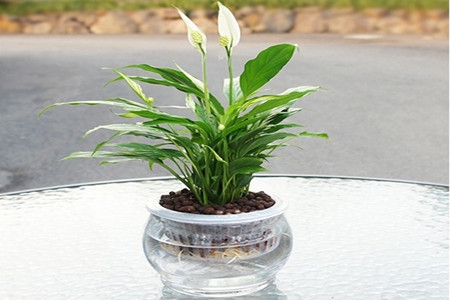
3、光照
水培的同样也需要光照。平时的养护中散射光就可以。放在光线好的窗口等地,不一定非得放在太阳底下。另外,夏季时需注意遮光,避免强光。
4、换水
不同的季节换水间隔不一样。高温时,比如夏季,需一周左右一次。温度低时,比如冬季,可以十到十五天一次。注意,换水之前需要清洗根部,然后将粘液、衰老的根、烂了的根剪掉,并将容器上附着的青苔等刷掉。水量也要注意,以没过根部的二分之一到三分之二为宜。另外,换水过后,还可在里面加入一些营养液。

5、喷水
为了防止叶片干枯,需要经常用清水喷洒叶片,特别是夏季。
6、施肥
除了换水时候的营养液,主要施加的是叶面肥。大约每周一次。这样能为其提供足够营养,使得叶片有光泽,冬季还可抵抗寒冷。
7、注意事项
在开花期时,喷洒一些磷酸二氢钾溶液,可促进开花。

2
4
◤恒觉:原来换水有讲究,我家的白掌总是要死不活。谢谢楼主分享!
成长记
kensong
2018年05月11日

Pruned my desert rose before leaving for a 2 week vacation and came back to this.




1
0


